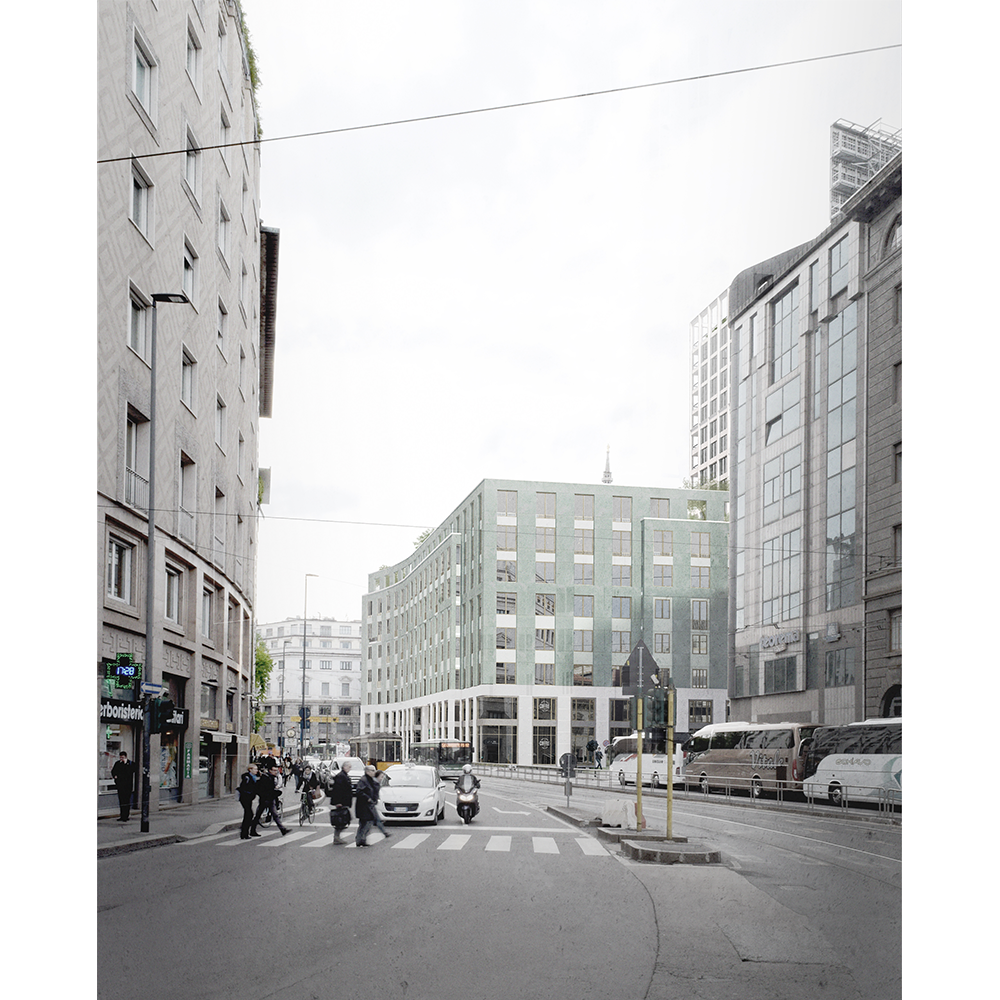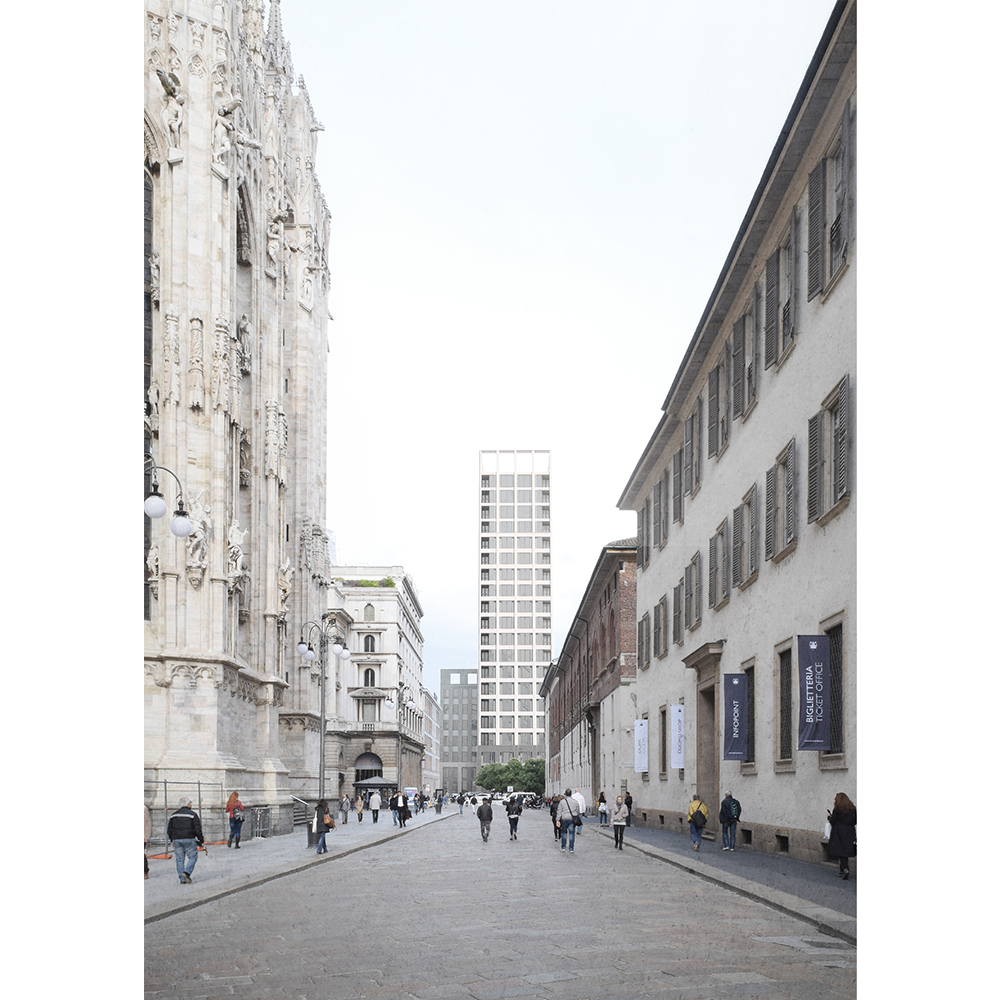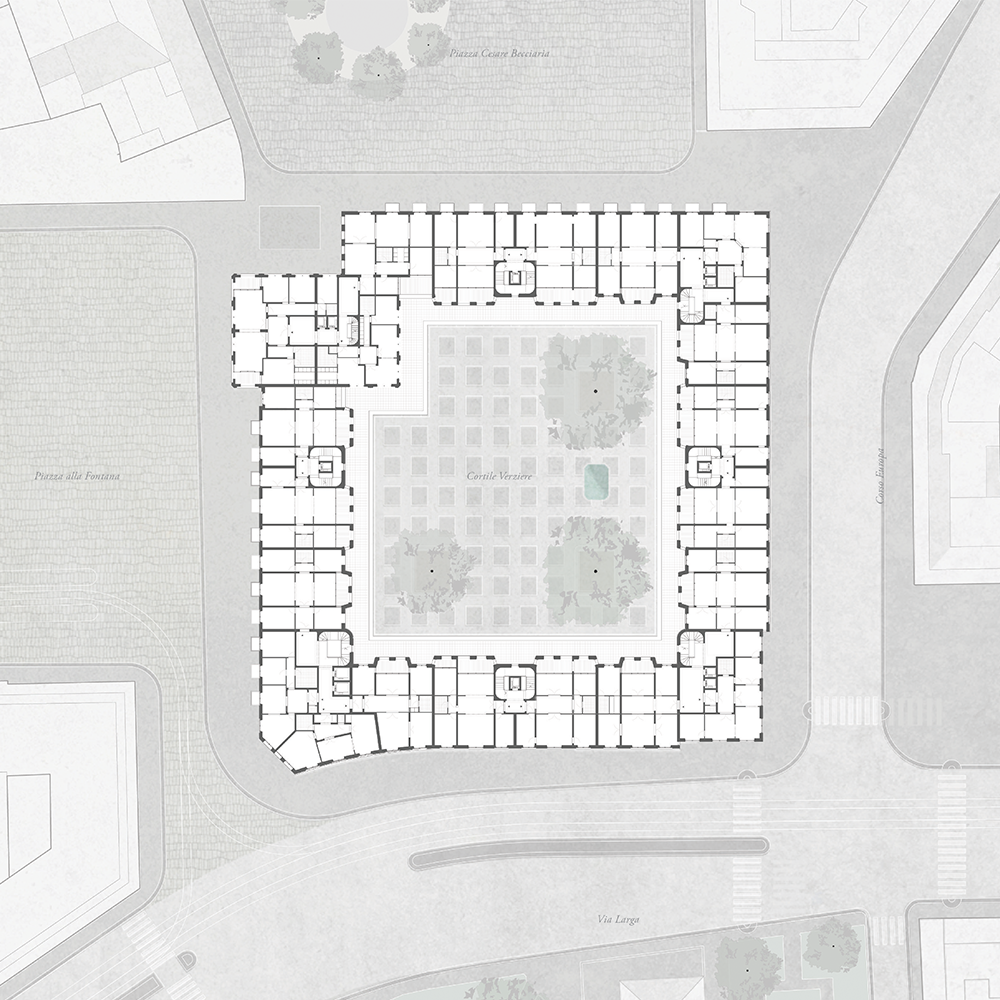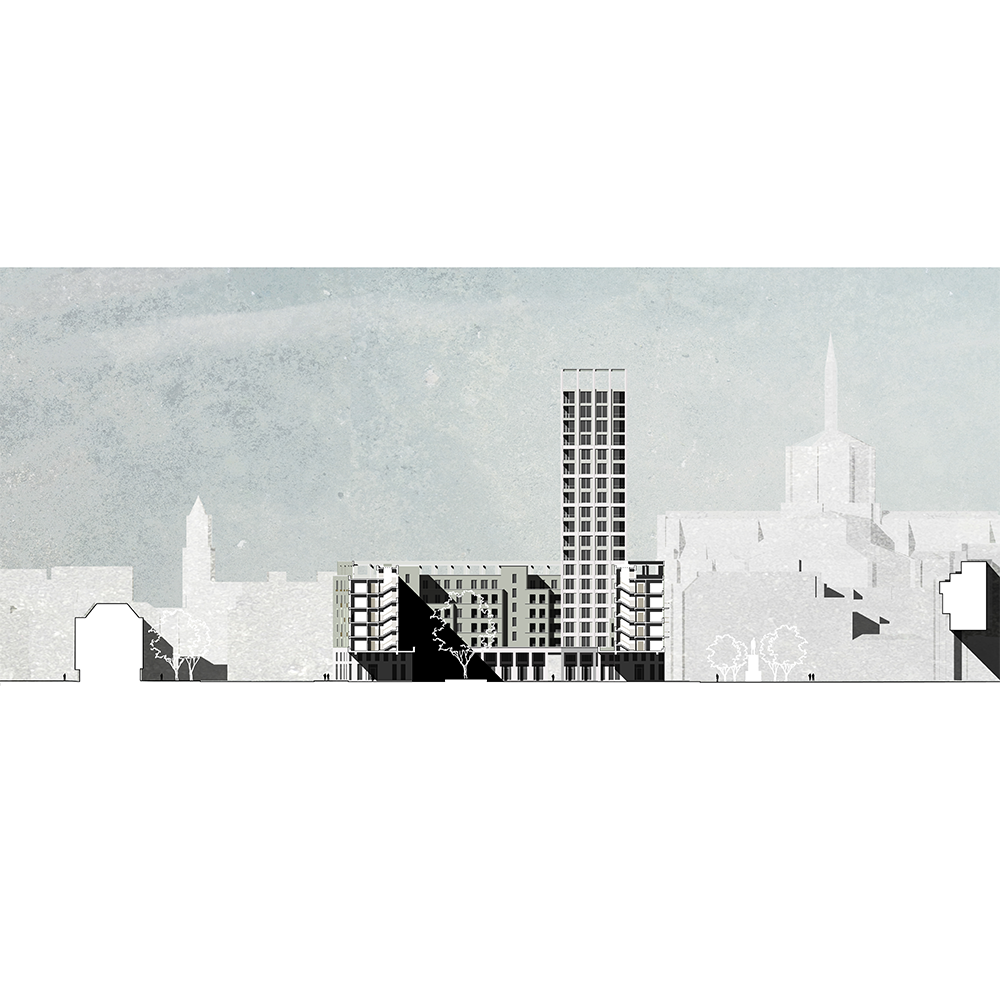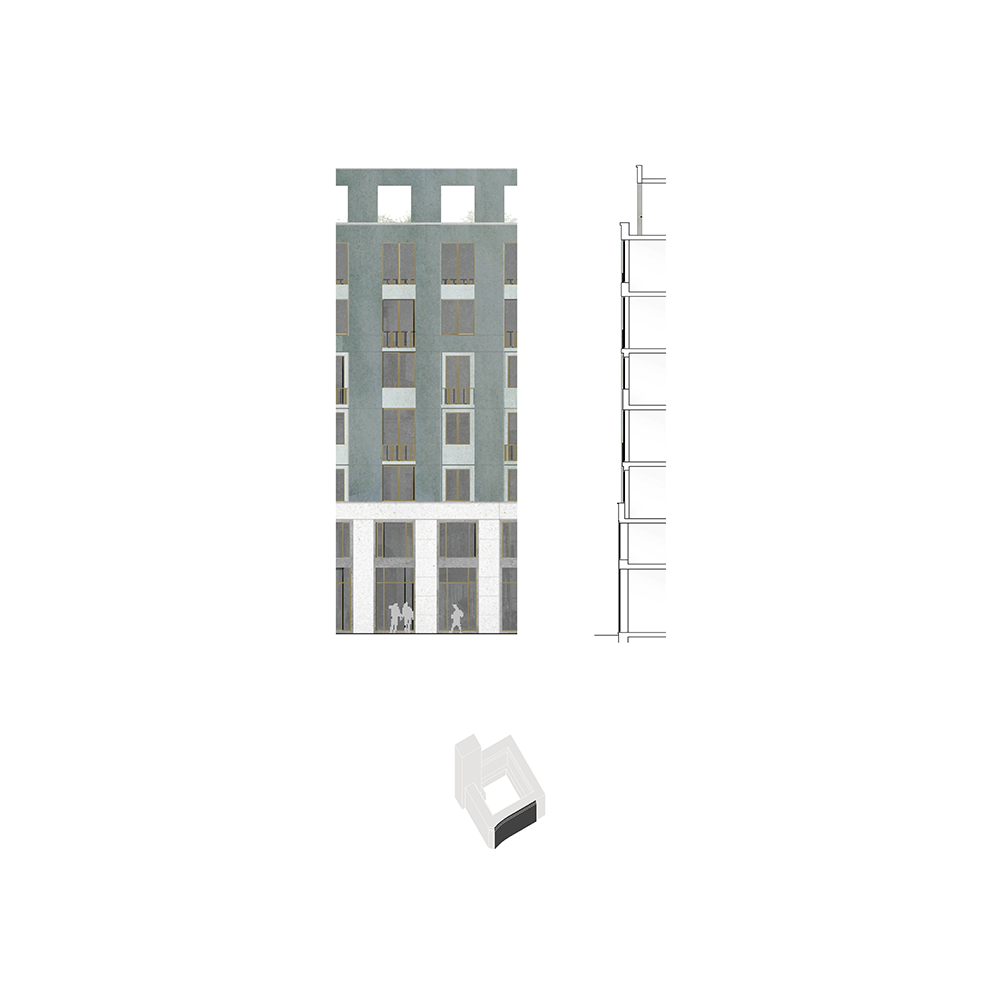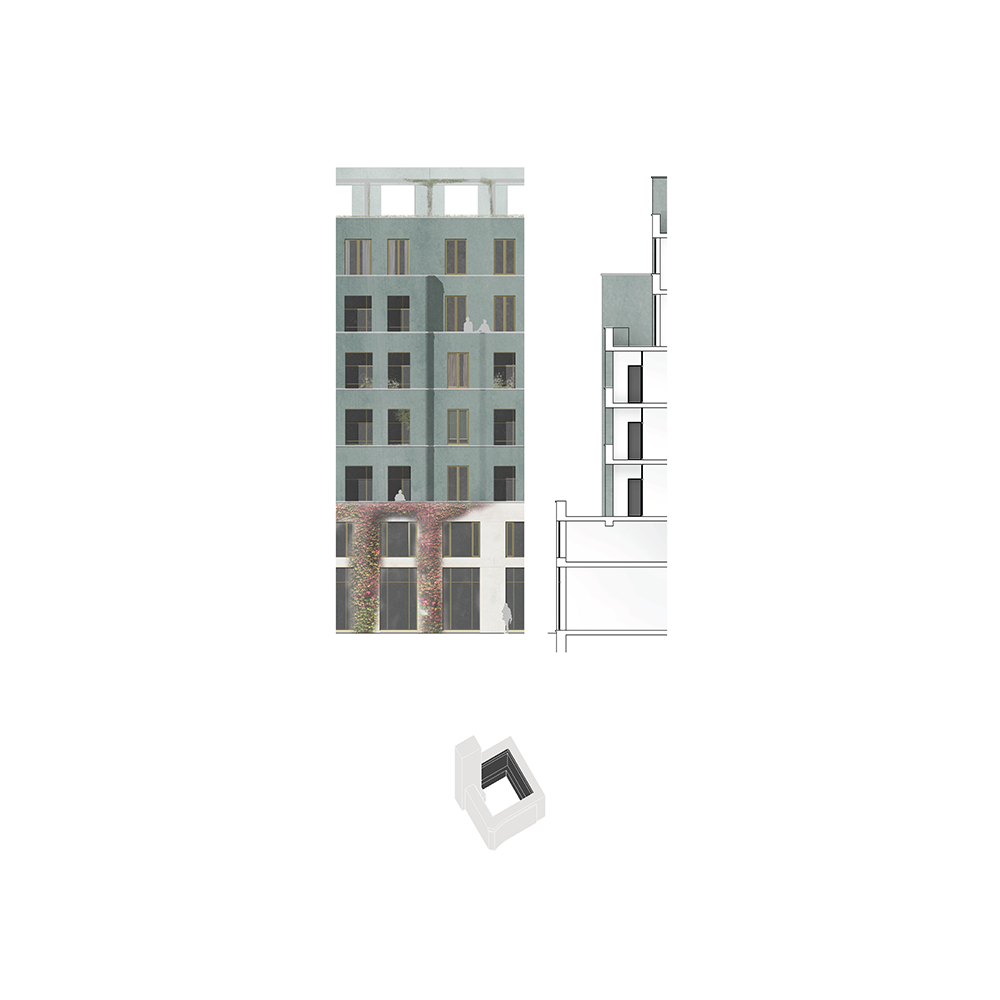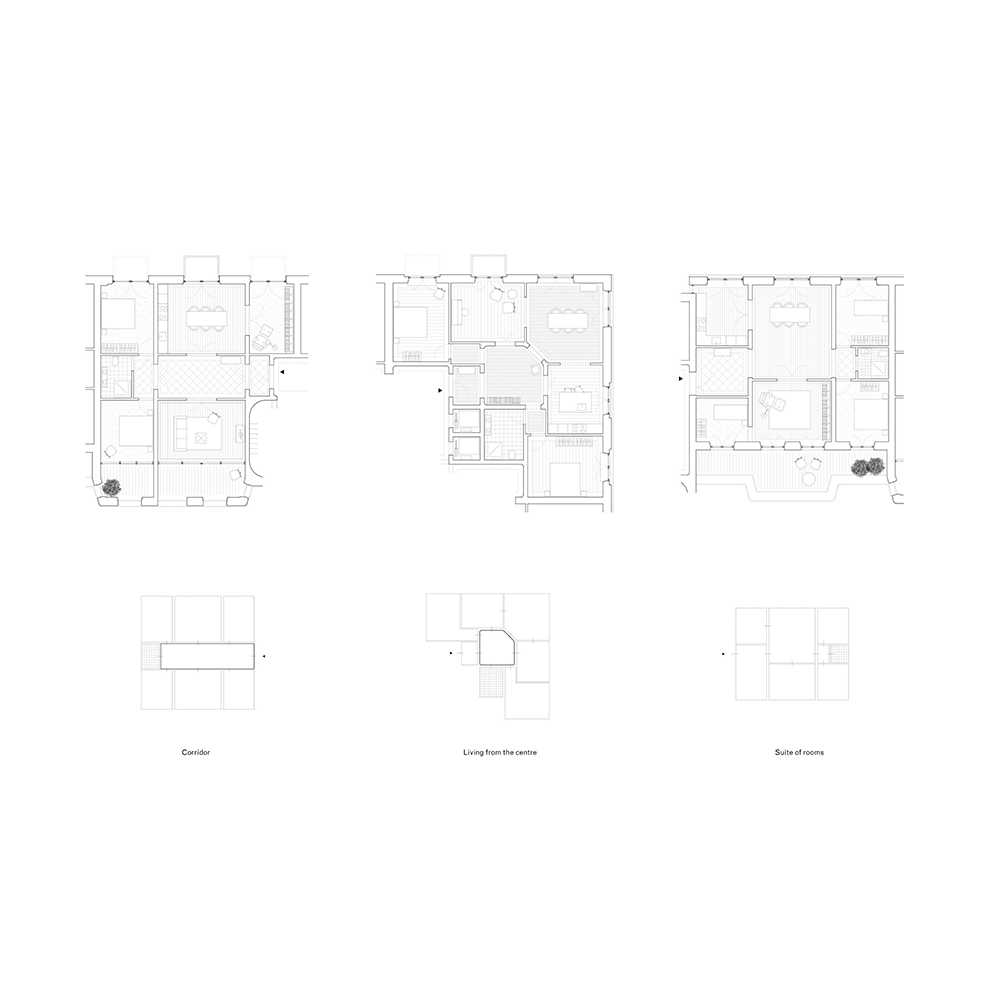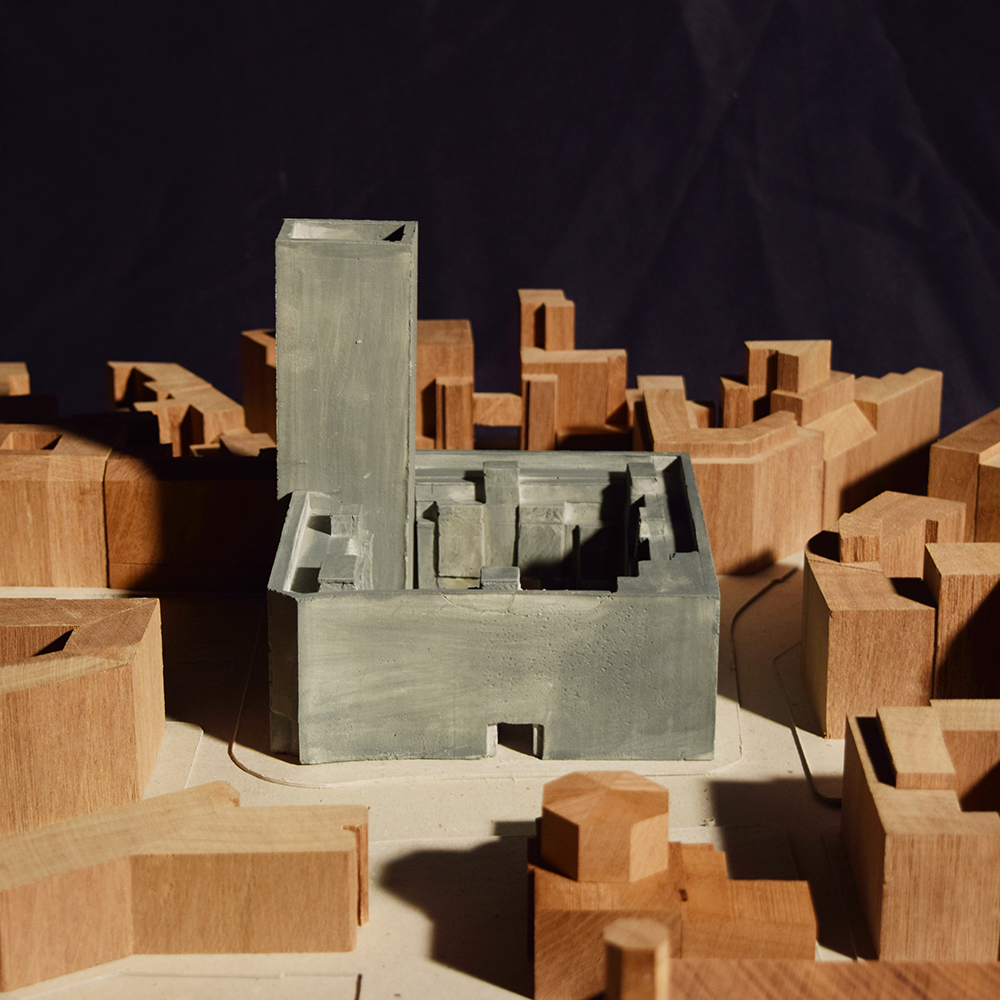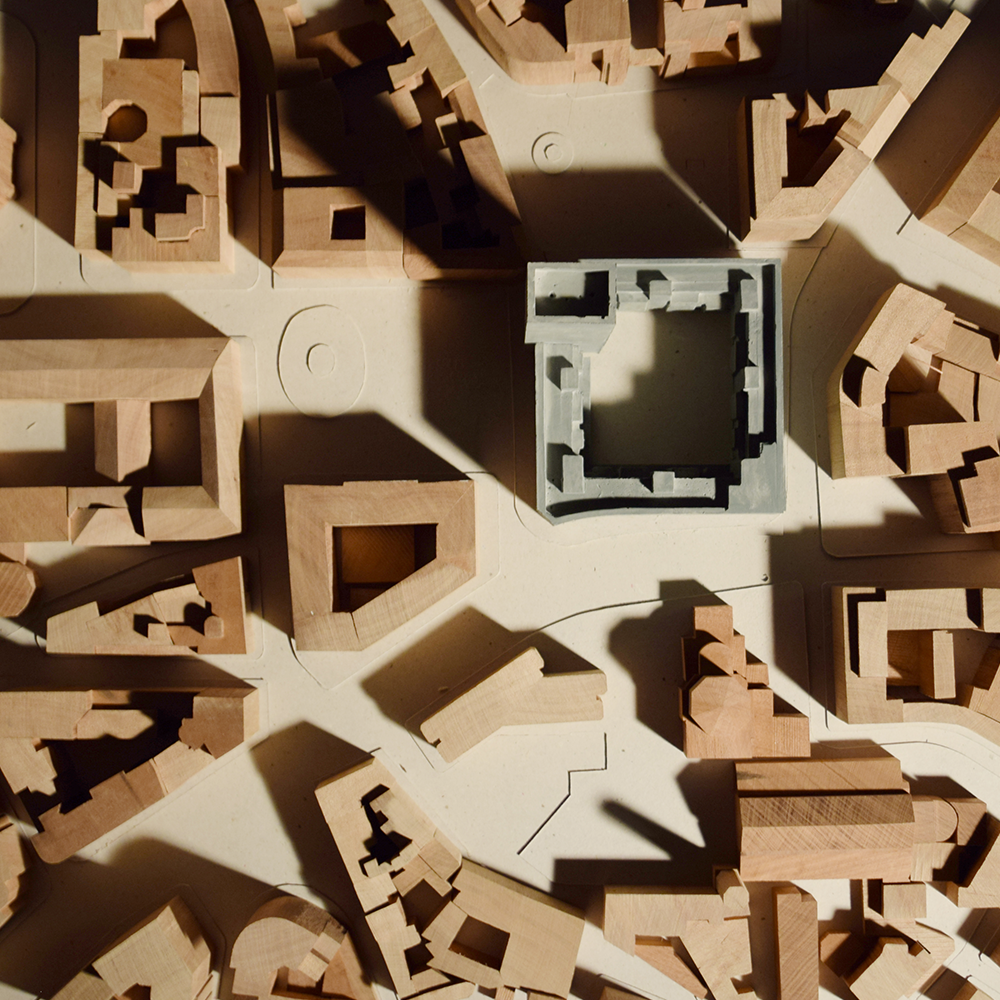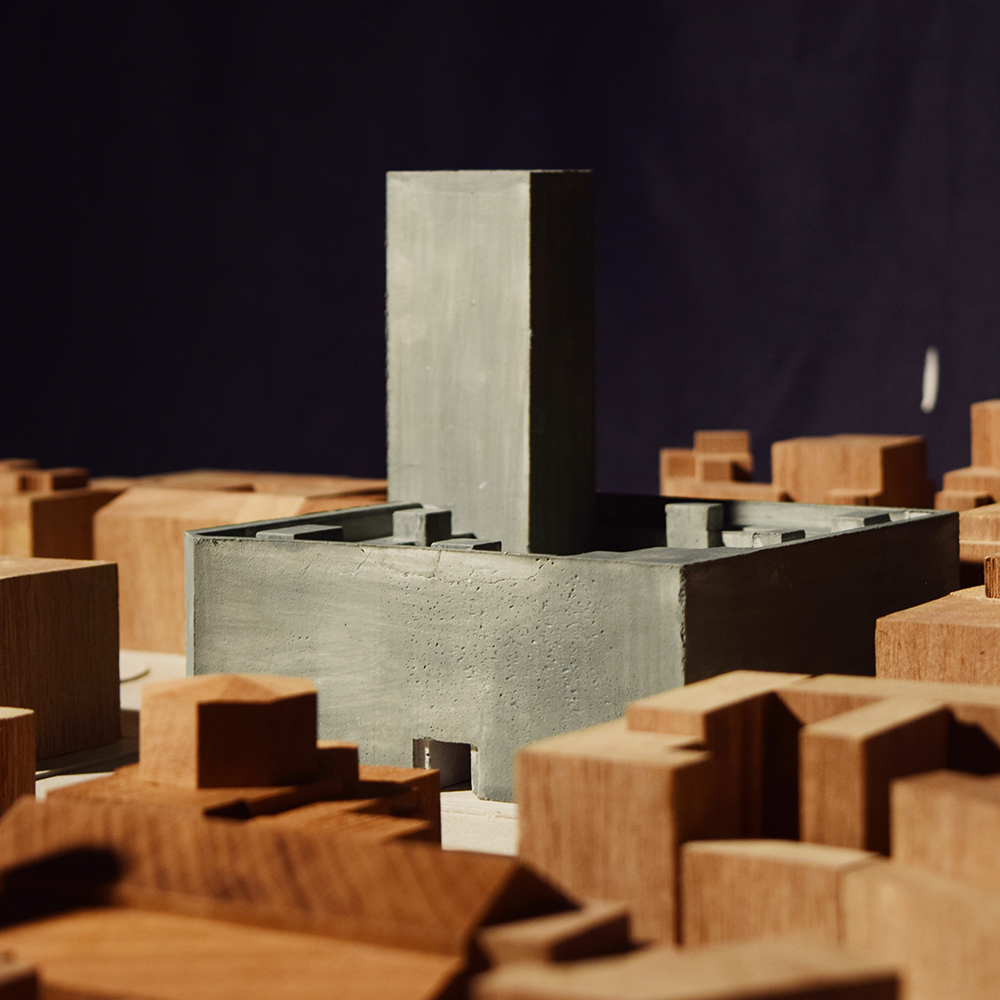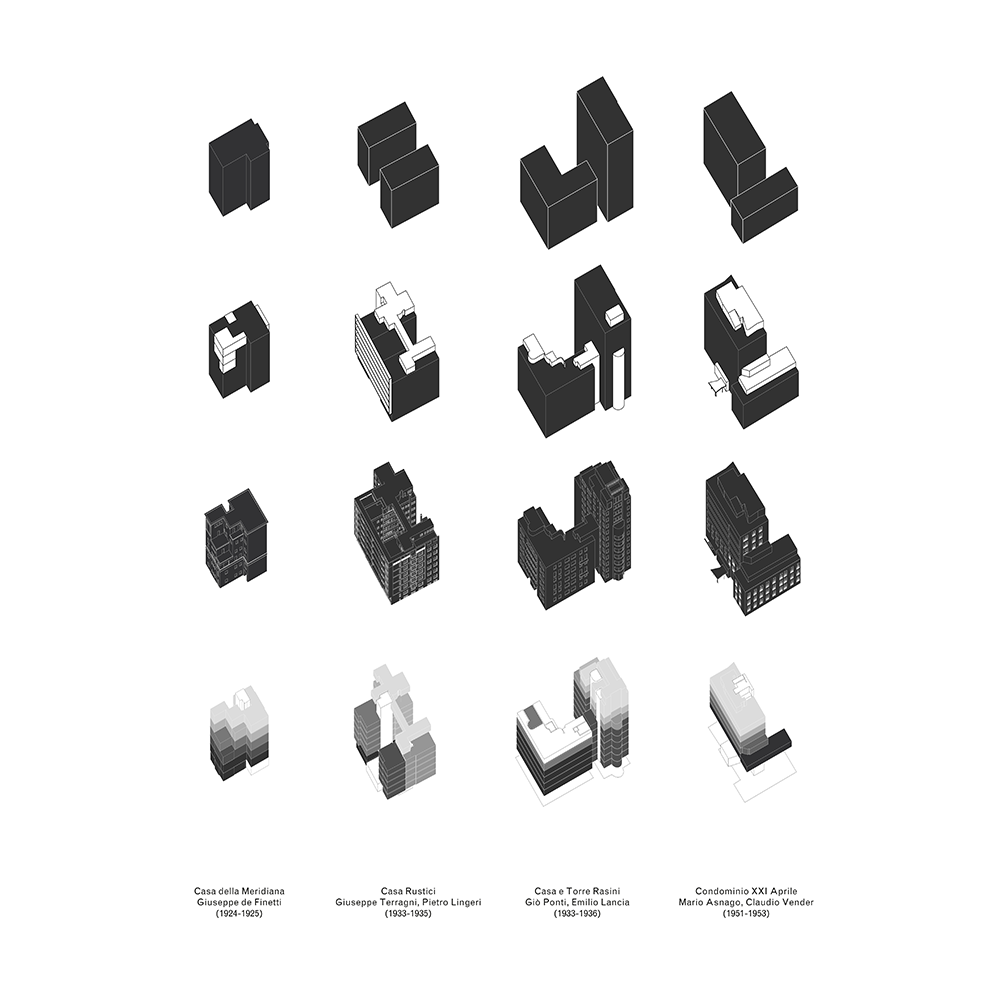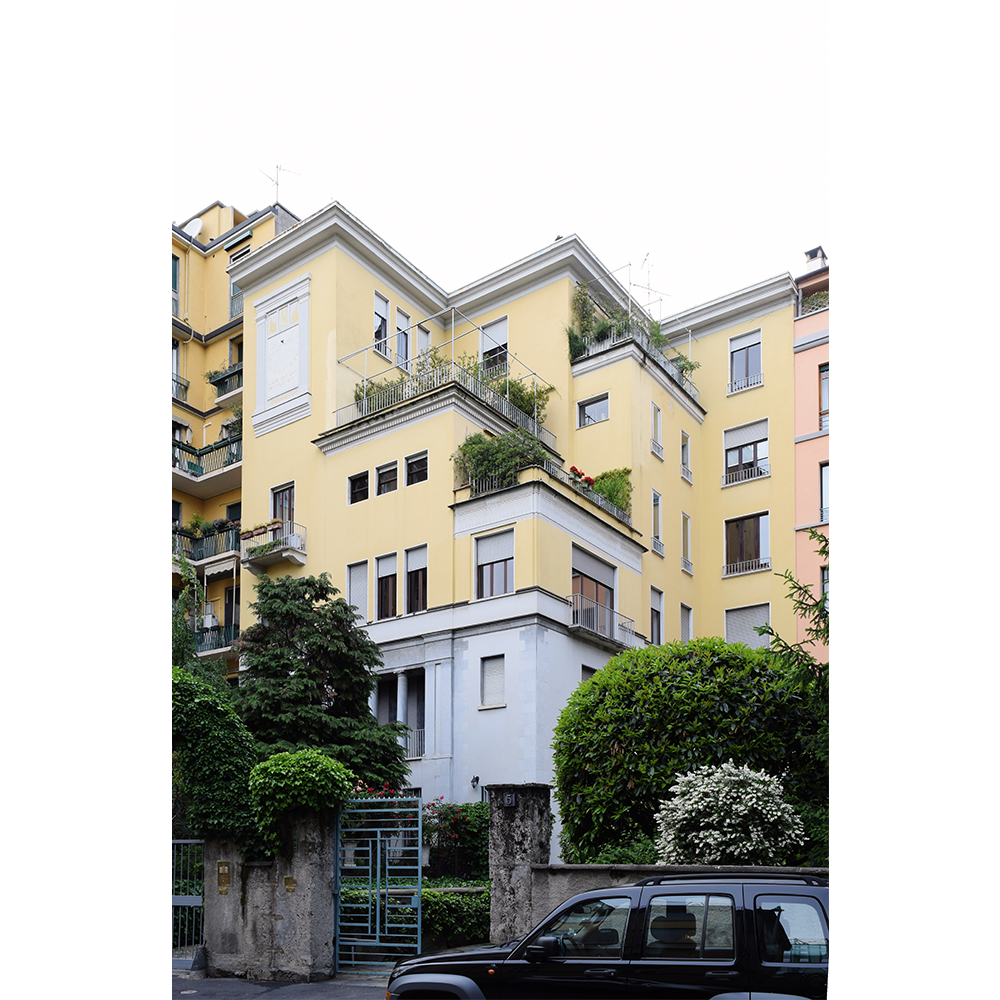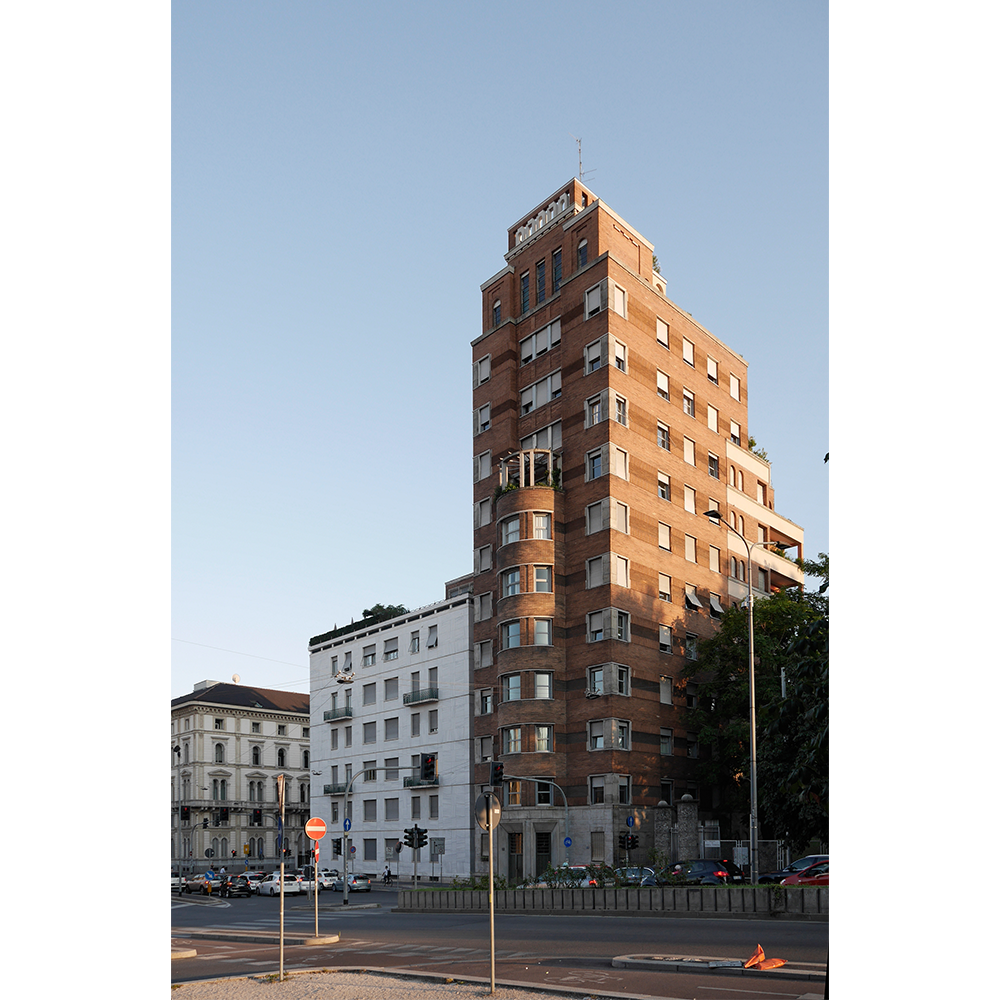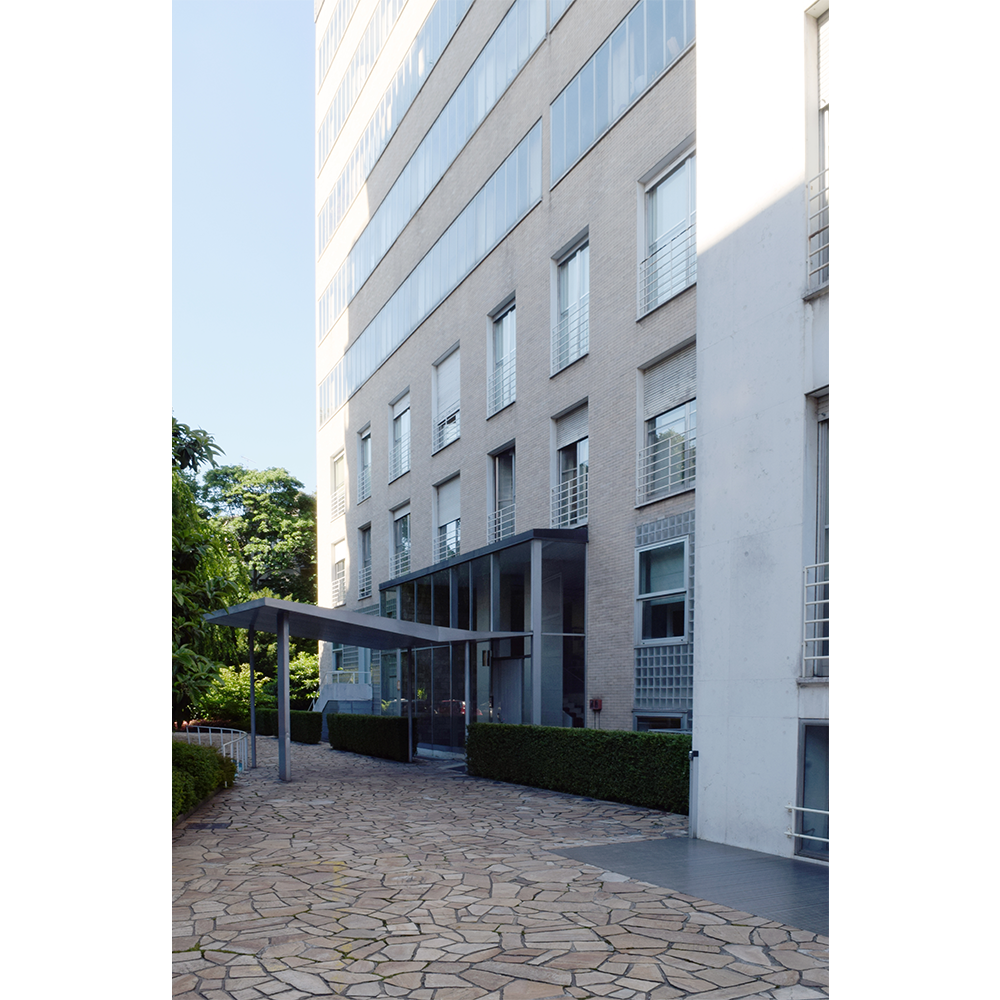firenze, a room with a view
napoli, viaggio in italia II
napoli, viaggio in italia I
marseille, patchwork city
madrid, topography of power
milano centrale
atlas
morphological series
fragment analysis
individual buildings
graduation projects
max van der westerlaken
daan jenniskens
antwerpen, de getekende stad
la città di roma
gran torino
münchen rekonstruiert
potsdam unraveled
berlin als modell
de rede van amsterdam
amsterdam langsdoorsnede
amsterdam dwarsdoorsnede
La Casa Urbana
Historical research has shown that at the start of the 20th century, the Milanese urban condition rapidly embraced the ideal of the industrial metropole. In the social dynamic typifying Milan at this time, the demand for a new dwelling typology for the expanding middle class grew. This thesis identifies a ‘Milanese School’ - spearheaded by architects like Muzio, Ponti and De Finetti - whose architecture responded to these challenges, addressing the scale of the modern city and the cultural residue of Milan’s history. Embedding a delicate balance between scale levels, they marvelously integrated the stacked, bourgeois dwelling in a representative urban gesture. Hence, the thesis considers this Milanese sense of coherence between architecture and the urban condition as a model worth pursuing in the design of a contemporary ‘Casa Urbana’ in the city’s centre.

